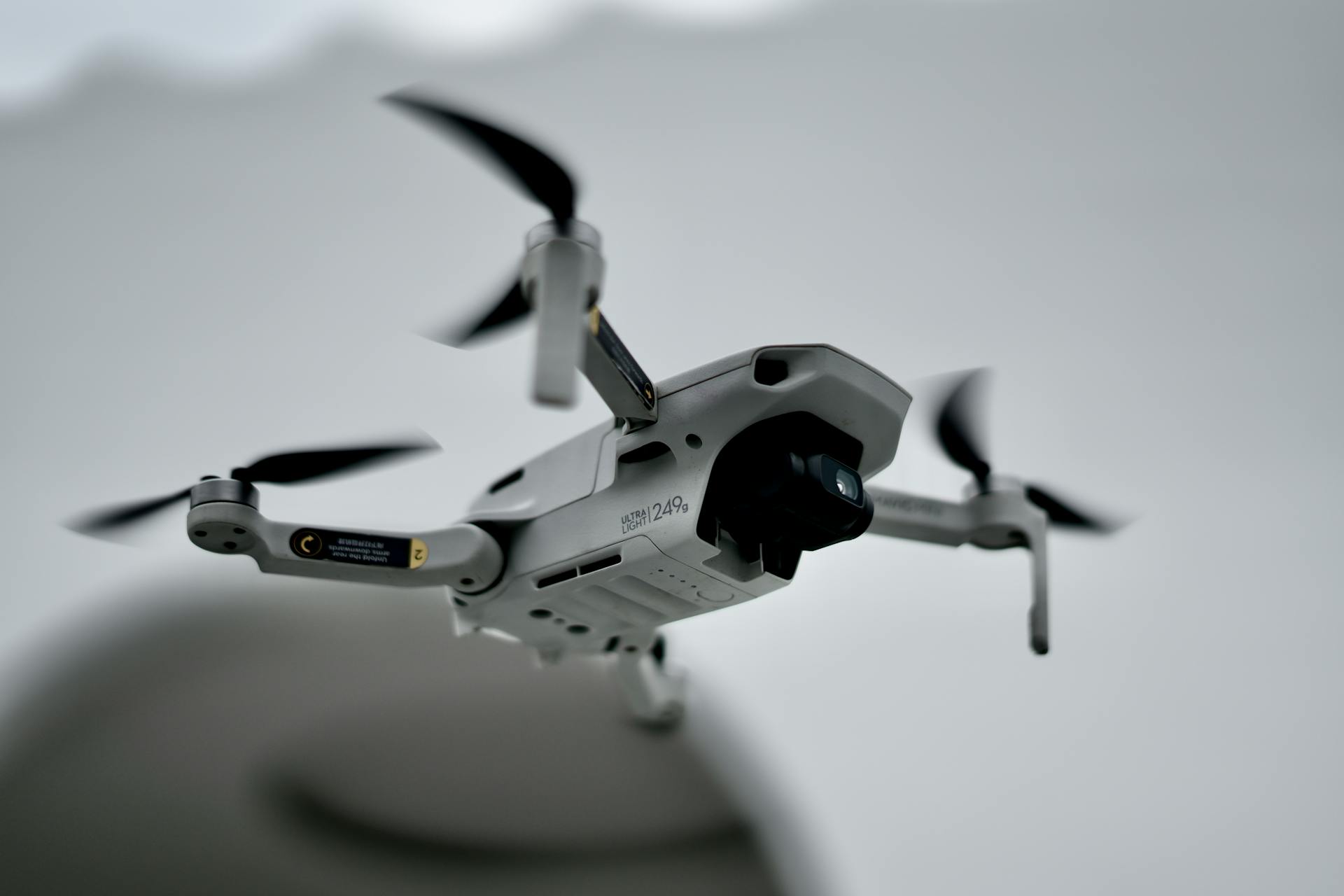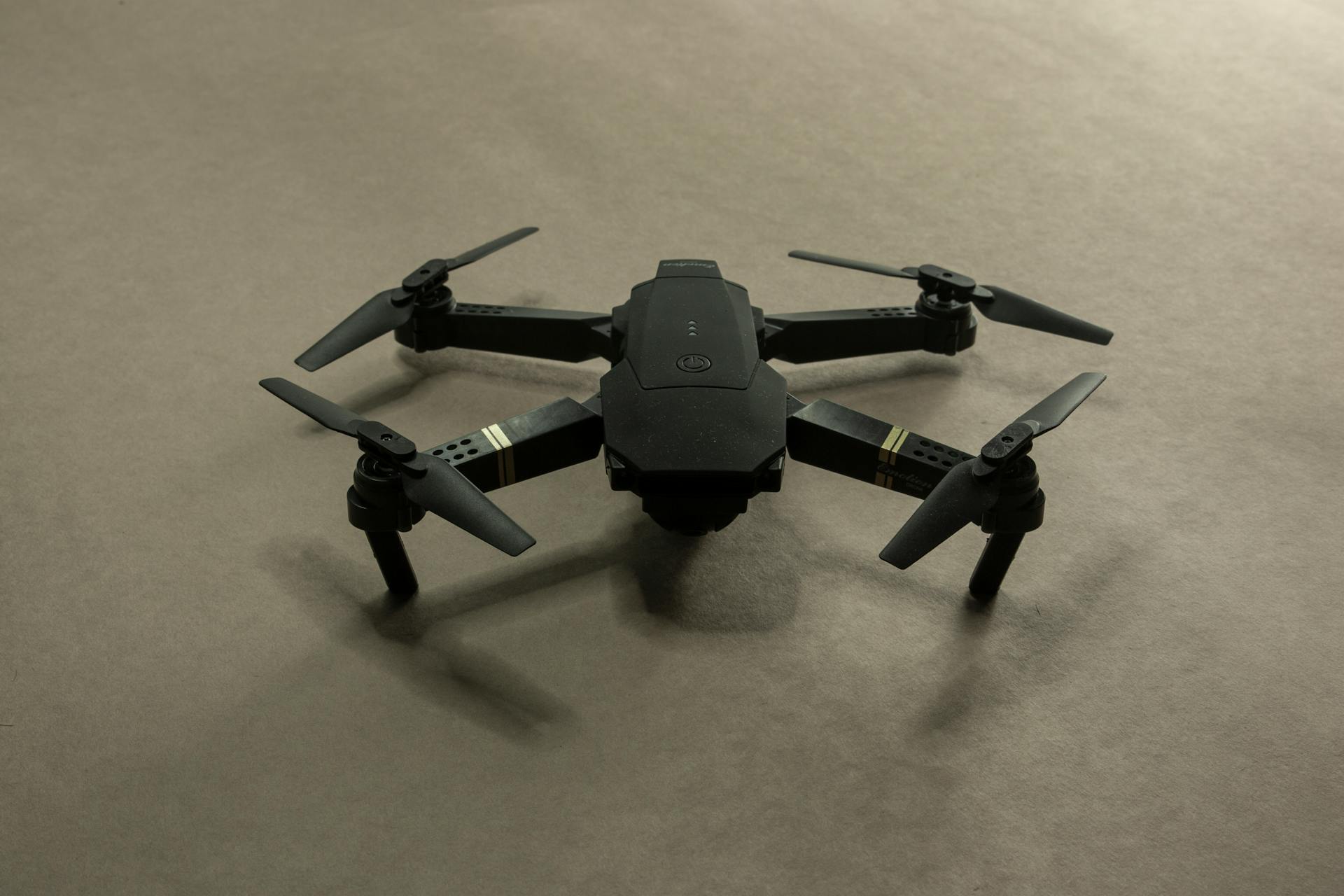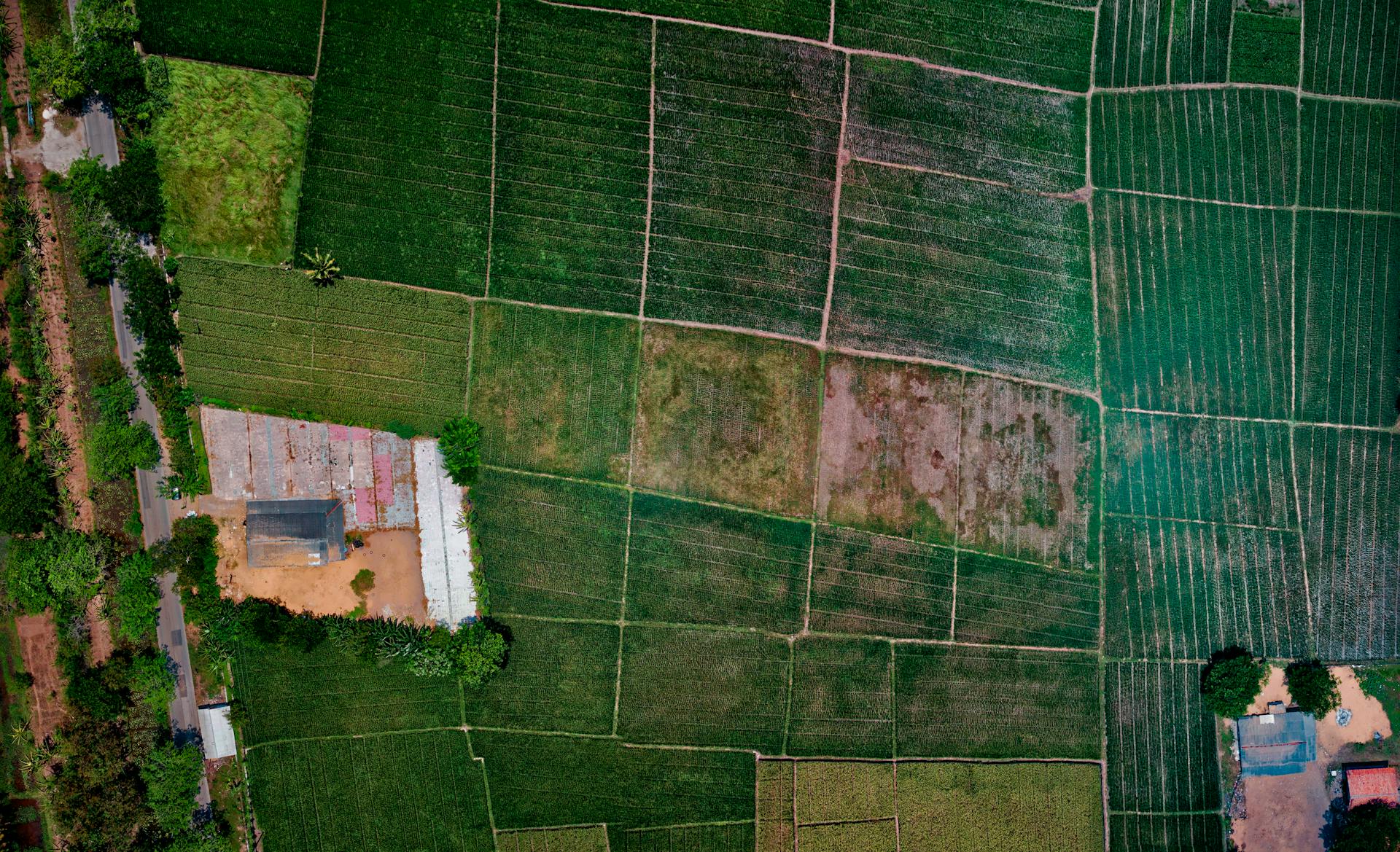
The FAA's drone remote ID deadline is fast approaching, and it's essential to understand what this means for you and your drone operations. As of September 16, 2023, all drones must be equipped with a remote ID system, which broadcasts the drone's location, altitude, and other identifying information.
If you're not already compliant, you'll need to take action to avoid fines and other penalties. The FAA has set a clear deadline, and it's essential to understand the requirements and take steps to meet them.
The remote ID system is a critical component of the FAA's broader effort to improve drone safety and accountability. By broadcasting this information, drones can be tracked and identified in real-time, reducing the risk of collisions and other incidents.
If you're unsure about the remote ID deadline or how to comply, don't worry – we've got you covered. In this guide, we'll walk you through the requirements and provide practical tips for meeting the deadline and beyond.
If this caught your attention, see: Faa Approved Drone Remote Id Module
Drone Compliance
If your drone already has built-in Remote ID capabilities, you might be in the clear. Most new, ready-to-fly drones manufactured after Sept. 16, 2022, already have this feature.
Some common drones that have built-in Remote ID capabilities include the Autel Dragonfish Series, DJI Air 2S, and DJI Mini 2. If you're not sure whether your drone already has built-in Remote ID capabilities, check your drone's manual or manufacturer's website for confirmation.
To make sure your drone is compliant, you can also check the FAA's publicly-available "Drone Identification and Tracking Equipment (DI&TE)" list on the FAA website.
If your drone doesn't have built-in Remote ID and you're not flying in buckets two or three, you can equip it with an approved Remote ID broadcast module. These modules attach to your existing drone and transmit the required information during flight.
The cheapest ready-to-fly Remote ID module option costs $99, which is the Zing Z-RID Lite.
Expand your knowledge: Dji - Mini 2 Se Drone with Remote Control
Understanding the Deadline
The Remote ID deadline is a crucial milestone for drone enthusiasts and professionals alike. The FAA has established a compliance deadline for manufacturers to produce drones equipped with Remote ID capabilities, which is mandatory for drones operating in U.S. airspace.
The compliance deadline is a key date to remember: March 16, 2024, marks the enforcement deadline, and the FAA will focus on education and outreach initially, but repeated or first-time violations could result in fines and suspension or revocation of pilot certificates.
To stay compliant, it's essential to know when Remote ID is required and when it's not. The FAA has identified four types of drone flights that need to broadcast their Remote ID: drones with built-in Remote ID capability, drones flying in an FAA-Recognized Identification Area (FRIA), drones weighing less than 250 grams and flown recreationally, and drones that do not have built-in Remote ID capability.
The Ultimate Guide
The FAA has established a compliance deadline for manufacturers to produce drones equipped with Remote ID capabilities. Compliance is mandatory for drones operating in U.S. airspace.
The deadline is a crucial aspect to consider, especially for drone enthusiasts and professionals. It's essential to know the specifics of the deadline to avoid any potential issues.
If your drone already has a built-in Remote ID capability, it's likely compliant with the new regulations. However, if your drone weighs less than 250 grams and is flown recreationally, you're exempt from broadcasting its location.
To determine if your drone needs to broadcast its location, check the following four "buckets" of drone flights:
The type of information broadcasted by Remote ID compliant drones includes unique ID, location and altitude, drone velocity, control station location and elevation, time mark, and emergency status. This information is crucial for the FAA, law enforcement, and other federal agencies to track and locate drones in the airspace.
Expiration and Termination
An FAA-recognized identification area will expire automatically unless renewed.
Unless renewed, an FAA-recognized identification area will expire automatically and will have no further force or effect as of the day that immediately follows the date of expiration.
The FAA can terminate an FAA-recognized identification area prior to expiration.
An individual identified as the point of contact for an approved FAA-recognized identification area may submit a request to the Administrator to terminate that FAA-recognized identification area.
The FAA may terminate an FAA-recognized identification area upon a finding that it may pose a risk to aviation safety, public safety, homeland security, or national security.
The FAA may also terminate an FAA-recognized identification area if it is no longer associated with a person eligible for an FAA-recognized identification area.
If the FAA terminates an FAA-recognized identification area due to a risk, that area will no longer be eligible to be an FAA-recognized identification area for as long as those conditions remain in effect.
You can petition the Administrator for reconsideration of the decision to terminate an FAA-recognized identification area.
A person may petition the Administrator for reconsideration of the decision no later than 30 calendar days after the termination of an FAA-recognized identification area.
You might like: Security Drones for Home
Equipping Your Non-Compliant Drone for Legal Flight
If your drone doesn't have built-in Remote ID, don't worry, you still have options. Numerous approved Remote ID broadcast modules are available for purchase from various manufacturers.
These modules attach to your existing drone and transmit the required information during flight. The cheapest ready-to-fly option, the Zing Z-RID Lite, costs $99. Unfortunately, these modules are not cheap.
To find the best Remote ID module for your drone, you can search for compliant drones and broadcast modules on the FAA website. There, you'll find the FAA's publicly-available "Drone Identification and Tracking Equipment (DI&TE)" list, which allows you to search by brand, model, or serial number.
Some popular drone models that have built-in Remote ID capabilities include the DJI Air 2S, DJI Avata, and Skydio 2+. However, if you're not sure whether your drone already has built-in Remote ID, check your drone's manual or manufacturer's website for confirmation.
Here are some popular drone models that have built-in Remote ID capabilities:
- Autel Dragonfish Series
- Autel EVO Max
- Autel Lite series
- Autel Nano Series
- DJI Air 2S
- DJI Avata
- DJI FPV
- DJI Inspire 3
- DJI M30 and M30T Dock Version
- DJI Matrice 300 RTK
- DJI Matrice 350 RTK
- DJI Mavic 3 series
- DJI Mavic Air 2S
- DJI Mini 2
- DJI Mini 3
- DJI Mini 3 Pro
- Holy Stone (various models)
- Parrot Anafi USA and Parrot Anafi Ai
- Skydio 2+
- Sony Airpeak S1
- Teal 2
FAA Regulations
The FAA has specific regulations in place for drone remote ID, and it's essential to understand them to avoid any issues.
Drone registration must be updated to indicate remote ID compliance, which can be done through the FAA's FAADroneZone website.
To update your drone registration, follow these steps: Log into FAADroneZone.Click on FAADRONEZONE SERVICES.Launch the Drone Owners and Pilots Dashboard.Manage your Device Inventory.Edit each drone's information to indicate remote ID compliance.
A standard remote identification unmanned aircraft must be capable of broadcasting specific message elements, including the identity of the unmanned aircraft, the latitude and longitude of the control station, and the latitude and longitude of the unmanned aircraft.
Worth a look: Amazon Delivery Drones Specs
FAA-Recognized Areas
The FAA has designated certain geographical areas as FAA-Recognized Identification Areas, where drones that can't meet Remote ID requirements can operate without them. These areas are typically in remote locations and require FAA approval.
To establish an FAA-Recognized Identification Area, you'll need to submit an application in a form and manner acceptable to the Administrator. The application must include information such as the name of the eligible person, the physical address of the proposed area, and the intended purpose of the area.
The FAA will assess your application and may require additional information or documentation to supplement it. They'll also consider factors like existing flight or airspace restrictions, the need for the area, and proximity to other FAA-Recognized Identification Areas.
If your application is approved, the FAA-Recognized Identification Area will be in effect for 48 calendar months. To renew the area, you'll need to submit a request no later than 120 days prior to expiration.
Minimum Message Elements by UAV
A standard remote identification unmanned aircraft must be capable of broadcasting the identity of the unmanned aircraft, consisting of a serial number assigned to it by the person responsible for its production.
The unmanned aircraft must also broadcast an indication of the latitude and longitude of the control station.
The latitude and longitude of the unmanned aircraft itself must also be broadcast.
A time mark identifying the Coordinated Universal Time (UTC) time of applicability of a position source output must be broadcast.
If this caught your attention, see: Guardian Unmanned Drones
The emergency status of the unmanned aircraft must be indicated.
The latitude and longitude of the take-off location of the unmanned aircraft must be broadcast.
Prior to takeoff, the unmanned aircraft must automatically test its remote identification functionality.
The unmanned aircraft must continuously monitor its remote identification functionality from takeoff to shutdown.
The unmanned aircraft must provide notification of malfunction or failure to the person manipulating the flight controls of the unmanned aircraft system.
The remote identification equipment must incorporate error correction in the broadcast of the message elements.
The remote identification equipment must not interfere with other systems or equipment installed on the unmanned aircraft.
The unmanned aircraft must be capable of broadcasting the message elements using a non-proprietary broadcast specification.
The reported geometric position of the unmanned aircraft and the control station must be accurate to within 100 feet of the true position, with 95 percent probability.
The reported geometric altitude of the control station must be accurate to within 15 feet of the true geometric altitude, with 95 percent probability.
The reported geometric altitude of the unmanned aircraft must be accurate to within 150 feet of the true geometric altitude, with 95 percent probability.
The unmanned aircraft must broadcast the latitude, longitude, and geometric altitude of the unmanned aircraft and its control station no later than 1.0 seconds from the time of measurement to the time of broadcast.
The unmanned aircraft must broadcast the message elements at a rate of at least 1 message per second.
The unmanned aircraft must not be able to take off unless it is broadcasting the message elements.
Related reading: Ar Drone 1
Section 89.525 Labeling
The FAA has strict regulations when it comes to labeling remote identification equipment.
To comply with Section 89.525, manufacturers must display a label on their products indicating that they meet the requirements of this part.
The label must be in English, legible, prominent, and permanently affixed to the unmanned aircraft or remote identification broadcast module.
Here are the specific requirements for labeling:
Manufacturers must ensure that the label is clearly visible and cannot be easily removed.
The label serves as proof that the product meets the FAA's minimum performance requirements for remote identification.
Frequently Asked Questions
Can I fly my drone without Remote ID?
Yes, you can fly your drone without Remote ID, but only within a FAA-Recognized Identification Area (FRIA) and within your visual line of sight.
Is drone Remote ID delayed?
No, the drone Remote ID is no longer delayed, as the non-enforcement period has expired. Compliance is now required for drone manufacturers and operators.
Sources
- https://www.thedronegirl.com/2024/03/06/march-16-remote-id-deadline/
- https://www.av8prep.com/aviation-library/part-107-drone/faa-remote-id-system-for-drone-operators
- https://www.canr.msu.edu/news/new-remote-id-requirement-for-drone-operators
- https://www.ecfr.gov/current/title-14/chapter-I/subchapter-F/part-89
- https://research.msu.edu/drones/faa-remote-id-requirements
Featured Images: pexels.com


